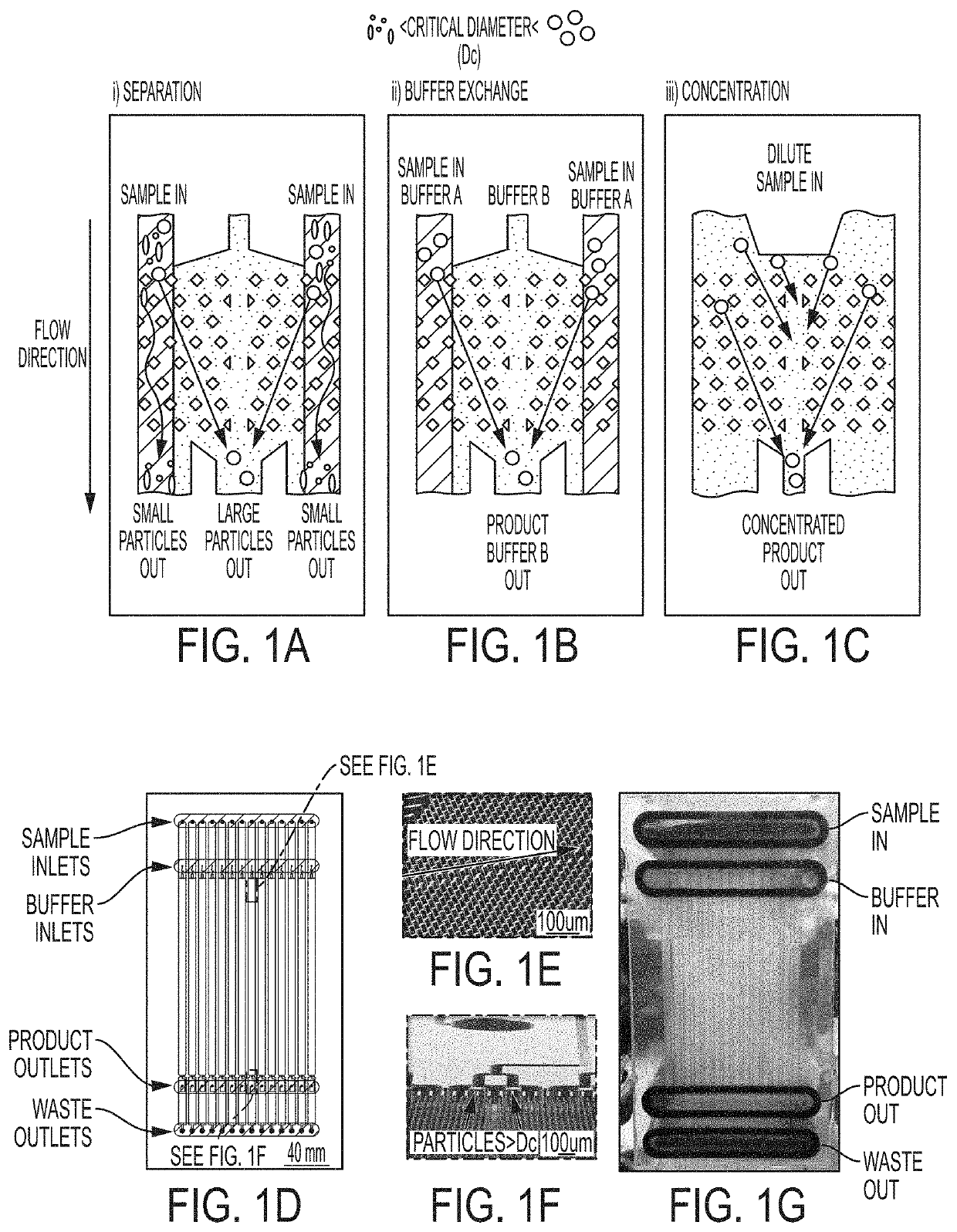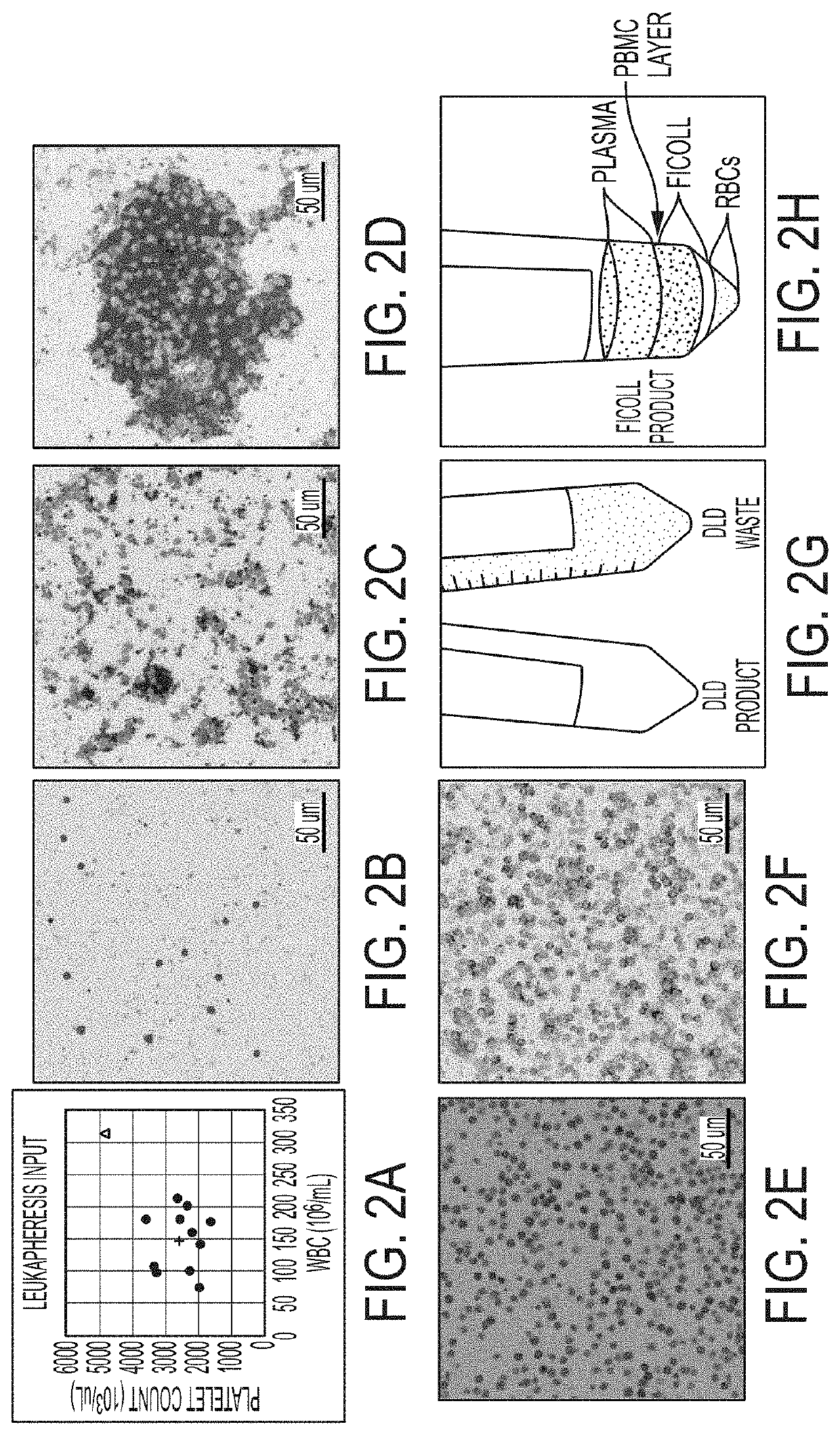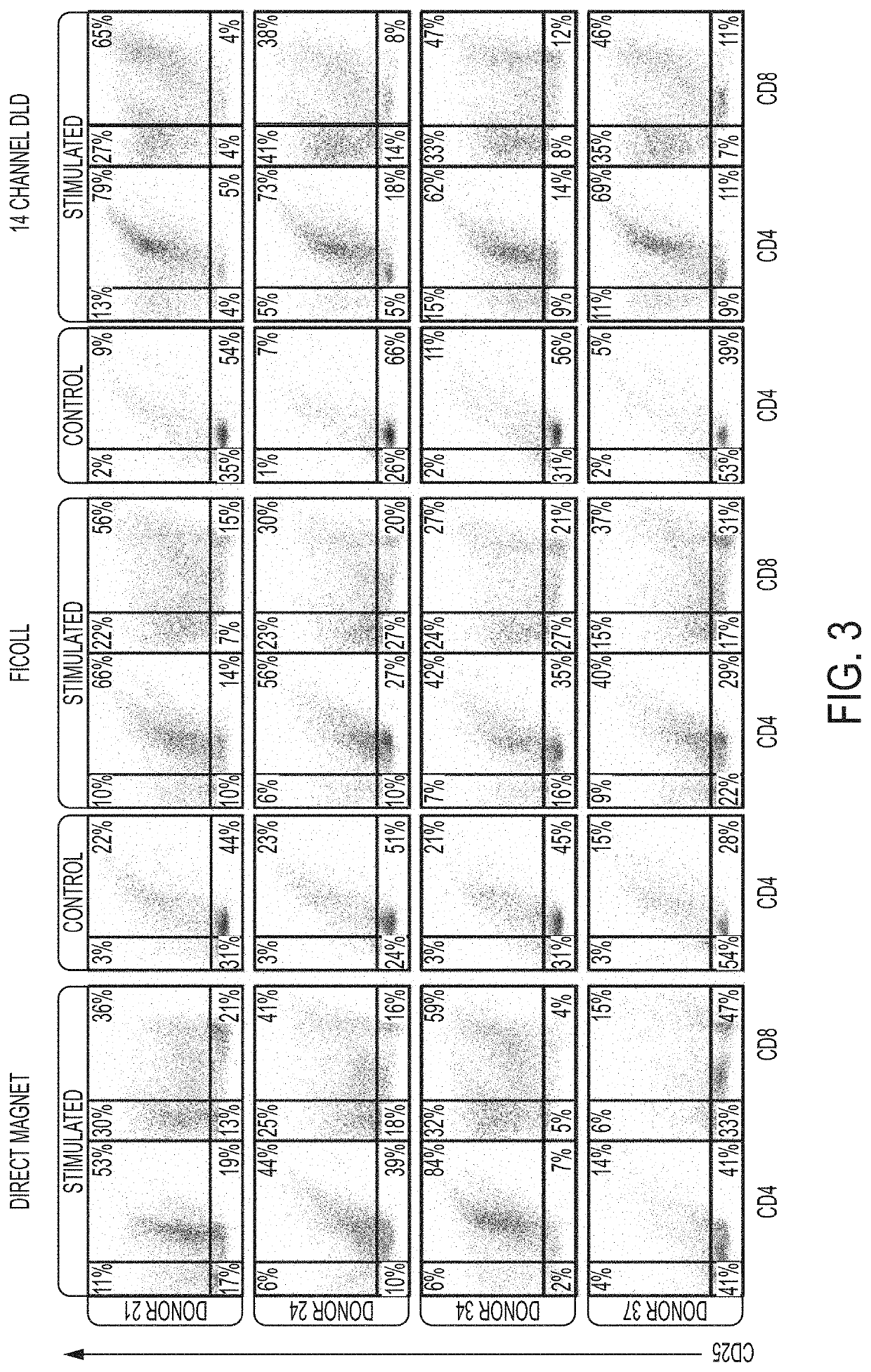Deterministic lateral displacement in the preparation of cells and compositions for therapeutic uses
a lateral displacement and cell technology, applied in the field of deterministic lateral displacement in the preparation of cells and compositions for therapeutic use, can solve the problem that the preparation of cells for personalized therapy is usually a labor-intensive process, and achieve the effect of facilitating the rapid processing of large volumes of starting materials
- Summary
- Abstract
- Description
- Claims
- Application Information
AI Technical Summary
Benefits of technology
Problems solved by technology
Method used
Image
Examples
examples
[0162]The following example is intended to illustrate, but not limit the invention.
[0163]This study focuses on apheresis samples, which are integral to CAR-T-cell manufacture. The inherent variability associated with donor health, disease status and prior chemotherapy all impact the quality of the leukapheresis collection, and likely the efficacy of various steps in the manufacturing protocols (Levine, et al., Mol. Therapy: Meth. Clin. Dev. 4:92-101 (2017)). To stress test the automated DLD leukocyte enrichment, residual leukocytes (LRS chamber fractions) were collected from plateletpheresis donations which generally have near normal erythrocyte counts, 10-20-fold higher lymphocytes and monocytes and almost no granulocytes. They also have ˜10-fold higher platelet counts, as compared to normal peripheral blood.
[0164]12 donors were processed and yields were compared of major blood cell types and processivity by DLD versus Ficoll-Hypaque density gradient centrifugation, a “gold standar...
PUM
| Property | Measurement | Unit |
|---|---|---|
| time | aaaaa | aaaaa |
| time | aaaaa | aaaaa |
| time | aaaaa | aaaaa |
Abstract
Description
Claims
Application Information
 Login to View More
Login to View More - R&D
- Intellectual Property
- Life Sciences
- Materials
- Tech Scout
- Unparalleled Data Quality
- Higher Quality Content
- 60% Fewer Hallucinations
Browse by: Latest US Patents, China's latest patents, Technical Efficacy Thesaurus, Application Domain, Technology Topic, Popular Technical Reports.
© 2025 PatSnap. All rights reserved.Legal|Privacy policy|Modern Slavery Act Transparency Statement|Sitemap|About US| Contact US: help@patsnap.com



